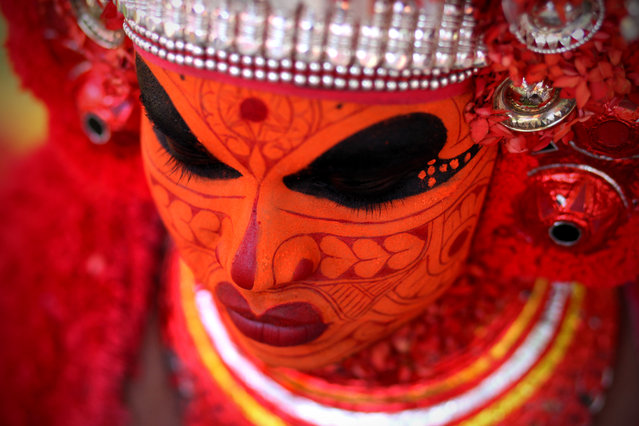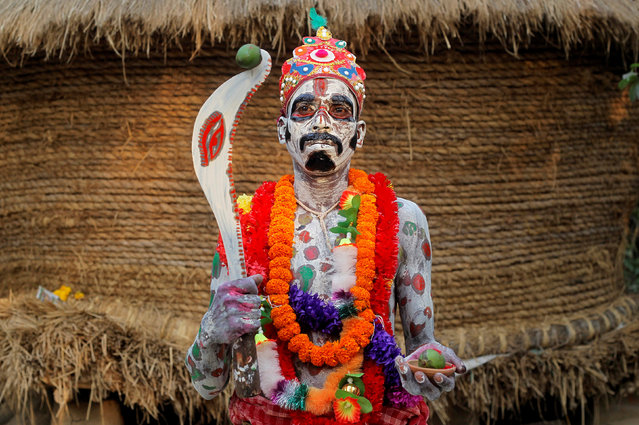
An Indian man stands dressed like Hindu god Shiva to attract alms from devotees during the Ambubasi festival at the Kamakhya Hindu temple in Gauhati, India, Sunday, June 22, 2014. The annual festival where hundreds of holy men from an esoteric form of Hinduism, gather to perform rituals at the temple begins on June 22. (Photo by Anupam Nath/AP Photo)
23 Jun 2014 11:43:00,post received
0 comments







